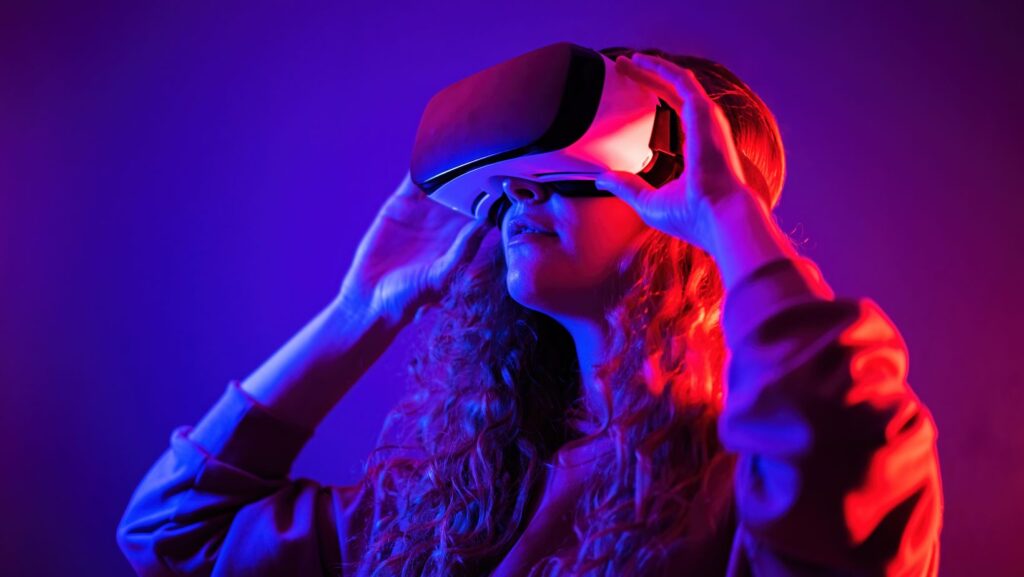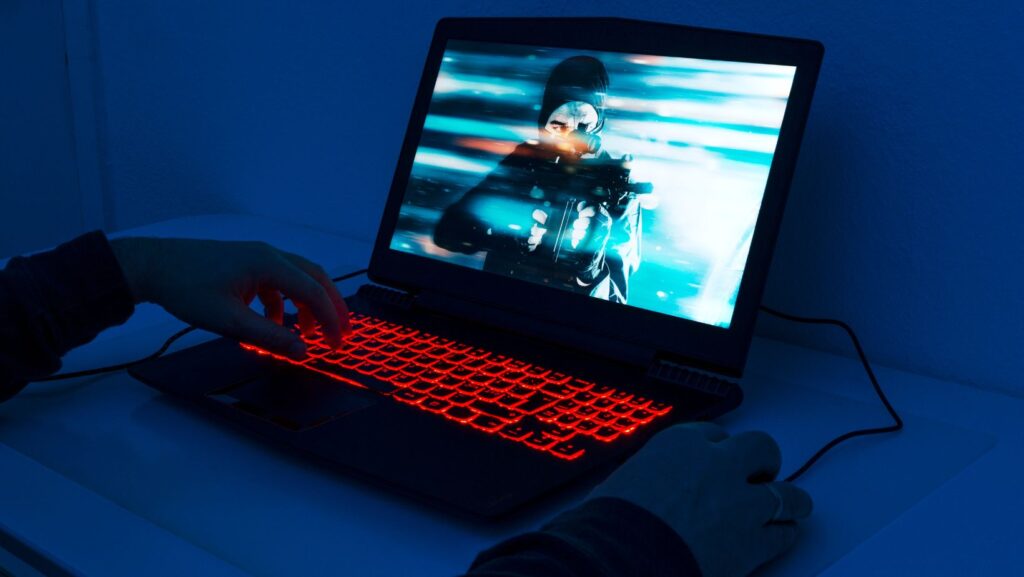 Virtual reality (VR) gaming isn’t just a futuristic concept anymore; it’s a booming industry that’s revolutionizing how people experience games. With immersive environments and interactive gameplay, VR companies are pushing the boundaries of what’s possible in digital entertainment. From industry giants like Oculus and HTC to innovative startups, these companies are at the forefront of creating mind-blowing experiences that transport players to entirely new worlds. As technology advances, VR gaming continues to evolve, offering more realistic graphics and seamless interactions that captivate gamers worldwide.
Virtual reality (VR) gaming isn’t just a futuristic concept anymore; it’s a booming industry that’s revolutionizing how people experience games. With immersive environments and interactive gameplay, VR companies are pushing the boundaries of what’s possible in digital entertainment. From industry giants like Oculus and HTC to innovative startups, these companies are at the forefront of creating mind-blowing experiences that transport players to entirely new worlds. As technology advances, VR gaming continues to evolve, offering more realistic graphics and seamless interactions that captivate gamers worldwide.
VR Gaming Companies
Early Innovators in the VR Space
 Early innovators in the VR space helped lay the foundation for today’s immersive experiences. Oculus, founded by Palmer Luckey in 2012, revolutionized the market with its Oculus Rift headset. Acquired by Facebook in 2014 for $2 billion, Oculus continues to push VR boundaries. HTC, with its Vive headset released in 2016, collaborated with Valve to provide high-fidelity VR interactions. Both companies prioritized innovative tracking systems and high-resolution displays. Startups like Magic Leap and Vuzix also contributed to VR’s growth. Magic Leap developed mixed reality experiences using advanced sensors and optics, securing over $2.6 billion in funding. Vuzix focused on smart glasses with both VR and AR applications, earning a spot on Fast Company’s list of Most Innovative Companies in 2019.
Early innovators in the VR space helped lay the foundation for today’s immersive experiences. Oculus, founded by Palmer Luckey in 2012, revolutionized the market with its Oculus Rift headset. Acquired by Facebook in 2014 for $2 billion, Oculus continues to push VR boundaries. HTC, with its Vive headset released in 2016, collaborated with Valve to provide high-fidelity VR interactions. Both companies prioritized innovative tracking systems and high-resolution displays. Startups like Magic Leap and Vuzix also contributed to VR’s growth. Magic Leap developed mixed reality experiences using advanced sensors and optics, securing over $2.6 billion in funding. Vuzix focused on smart glasses with both VR and AR applications, earning a spot on Fast Company’s list of Most Innovative Companies in 2019.
Major Milestones and Advances
Major milestones and advances in VR gaming have accelerated its adoption. Oculus launched the Quest series in 2019, offering standalone VR with inside-out tracking, which eliminated the need for external sensors. HTC introduced the Vive Pro Eye in 2019, integrating eye-tracking technology for enhanced realism and gameplay precision. Sony’s PlayStation VR (PSVR), launched in 2016, made VR accessible to console gamers. By February 2020, over 5 million units were sold, showing significant market penetration. Valve’s Index, released in 2019, set a new standard with its finger-tracking controllers and high-resolution displays.
Leading VR Companies in 2020s
Oculus VR: Pioneering the Future
Oculus VR, a subsidiary of Meta Platforms, has become a significant player in the VR gaming space. Known for their Quest series, Oculus introduced standalone VR headsets, eliminating the need for external hardware like PCs or consoles. The Quest 2, launched in October 2020, supports inside-out tracking, offering a wireless and highly immersive experience. Oculus Link functionality allows users to connect the Quest 2 to a PC for enhanced performance, making it versatile for various gaming needs.
HTC Vive: Innovation through Collaboration
HTC Vive, a product of a collaboration between HTC and Valve Corporation, continues to push the boundaries of VR gaming. HTC’s Vive Pro 2, released in May 2021, boasts a 5K resolution and 120Hz refresh rate, providing crystal-clear visuals and smooth gameplay. With features like eye-tracking and full-body tracking, HTC targets both consumers and enterprise users, enhancing user engagement. The collaboration with Valve has also enabled deeper integration with the Steam VR ecosystem, expanding content accessibility.
Sony PlayStation VR: Mainstream Gaming Adoption
Sony’s PlayStation VR (PSVR) brought virtual reality gaming to the mainstream with its release in 2016. As an accessory to the PlayStation 4 and 5, PSVR offers a cost-effective entry point into VR gaming. Sony announced PSVR 2 in early 2021, featuring improvements like 4K HDR and inside-out tracking, aiming to elevate gaming experiences. Popular titles such as “Astro Bot: Rescue Mission” and “Blood & Truth” have made PSVR a popular choice among console gamers, driving widespread adoption.
Technology and Features in Modern VR Games
Graphic and Audio Advancements
 Modern VR games offer cutting-edge graphics and audio, creating highly immersive experiences. Advanced GPUs from companies like NVIDIA and AMD enable high-resolution displays, crucial for realistic visuals. For instance, the Oculus Quest 2 features a resolution of 1832 x 1920 pixels per eye, providing sharp and detailed imagery. Spatial audio technology enhances immersion by simulating realistic soundscapes. Systems like Valve’s Index incorporate advanced audio solutions to create 3D audio environments, making players feel as though they’re inside the game world. This feature improves gameplay by allowing players to perceive sound direction and distance accurately.
Modern VR games offer cutting-edge graphics and audio, creating highly immersive experiences. Advanced GPUs from companies like NVIDIA and AMD enable high-resolution displays, crucial for realistic visuals. For instance, the Oculus Quest 2 features a resolution of 1832 x 1920 pixels per eye, providing sharp and detailed imagery. Spatial audio technology enhances immersion by simulating realistic soundscapes. Systems like Valve’s Index incorporate advanced audio solutions to create 3D audio environments, making players feel as though they’re inside the game world. This feature improves gameplay by allowing players to perceive sound direction and distance accurately.
Immersive Gameplay Mechanics
VR games utilize innovative gameplay mechanics to enhance interactivity and immersion. Many games feature intuitive controls, leveraging hand-tracking and motion-sensing technologies. Oculus Quest series, for example, uses inside-out tracking to offer highly responsive and precise movement capture. Haptics technology, integrated into controllers like Sony’s PlayStation VR2, provides tactile feedback, making in-game actions feel more realistic. This technology adds a layer of physical interaction, helping players feel a connection to the virtual environment. Games often incorporate eye-tracking features, as seen in the HTC Vive Pro Eye, to adjust perspective and interface based on where players look. This functionality makes interactions more natural and enhances the overall gaming experience by reducing the need for manual inputs.



